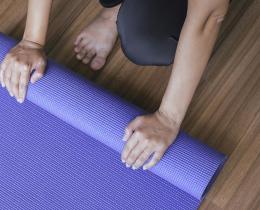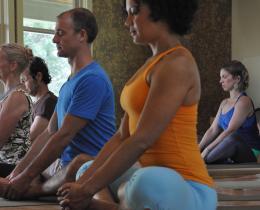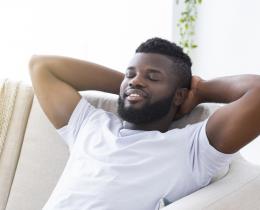Anytime you want to reboot your practice, you can come back to the yoga basics. When considering which poses to choose, I thought: If I had a group of beginners, which poses would I focus on that would be foundational poses for the rest of their lives and why?
These are my choices:
- Mountain pose—tadasana—which is a constant reminder of basic posture, and yet sublime, subtle alignment—a pose in which all others return and reflect.
- Handstand—adho mukha vrksasana—would need to be included, or a handstand variation, to get people mentally awake and present.
- Downward-facing dog—adho mukha svanasana—is the quintessential yoga posture that connects both our hands and feet to the earth, brings suspension to our torso, and reconnects us to the animal world.
- Headstand—sirsasana—aligns our entire spine with particular attention to our neck and our head; when learned properly, headstand brings us closer to our energetic center and quiets the chatter in our minds.
- Reclined hero’s pose—supta virasana—is the one pose that addresses many of the bindings of modern Western culture—for example, the full bending of the knees and the full opening of the hip flexors.
- Upward-facing-bow pose—urdhva danurasana—is included to keep our entire spine free and healthy, and to keep our hearts wide open and fearless.
- Shoulder stand is the queen cooling pose, and the perfect bookend to headstand; it releases so much built up tension in the neck and shoulders, and sets us deep into the inward journey.
- Plow pose—halasana—releases all the muscles of our back body, and plummets us further inward.
- Full-seated forward bend—paschimottanasana—is the essential forward bend that opens the flight muscles (the hamstrings), and gets our senses to turn inward toward our breath; with full-seated forward bend, our breath is forced closer to our central channel, and any blockages become apparent.
- Relaxation pose—savasana—is the classic pose to still our body as we challenge our mind to stay present and aware.
- With any cross-legged-seated pose that allows for ease and freedom of the breath, the foundations for meditation can be explored.
I know some of these poses are not available to many of you, and that you will have to substitute other poses or modifications. But these are the basics I keep in mind and am always refining.
They can help bring your yoga practice back to its life-giving roots, and plant them well into Mother Earth.





